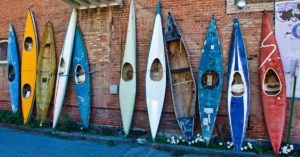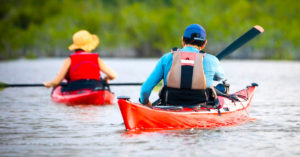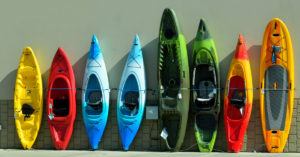Kayak and Canoeing
Canoes and kayaks are some of the earliest forms of man powered watercraft. They have come a long way from animal hides and hollowed-out logs, and are now one of the worlds favourite ways to get out and about on the water.
According to the 2019 special report on paddlesports, more than 25 million Americans participated in some form of canoeing or kayaking. With recreational kayaking being most popular with 11 million participants in 2018 alone!
Looking to learn more about Kayaking or Canoeing? Check out all our articles Here
A Brief History
Long, long before the much loved recreational activity and sport we know today, with evidence dating as far back as 8000BC, canoes and kayaks were used for transporting people and goods over great distances, fishing and hunting in areas inaccessible by land. They have been vital in exploring deep into vast continental interiors and colonising some of the most distant islands on the planet and played an instrumental part in shaping human history and making the world what it is today.
Throughout history, indigenous groups across the world have constructed canoes out of many different materials and methods.
In eastern Canada and parts of the Northeastern United States, the bark of the paper birch tree was harvested and sewn together around a white cedar frame, with a sticky pine resin pitch used to waterproof the craft. Later a similar technique was used, stretching a canvas over a frame rendered waterproof with varnishes or paints.
In areas with limited access to suitable trees such as Egypt, tightly bound reeds were used to create canoe-like crafts. This access to the Nile and the ability to move goods by water significantly contributed to the development of one of humanity’s first great civilisations.
Arguably one of the most influential canoe construction was the dugout. Carved from one solid tree trunk, they were strong and seaworthy. However, if fitted with an outrigger or even combining two hulls as a catamaran created a stable enough vessel to support a mast and sail. It was these voyaging canoes that allowed the Polynesians to colonise south-east Asia and the Pacific islands as far as Hawaii and New Zealand, hundreds if not thousands of years before the discovery by European explorers.
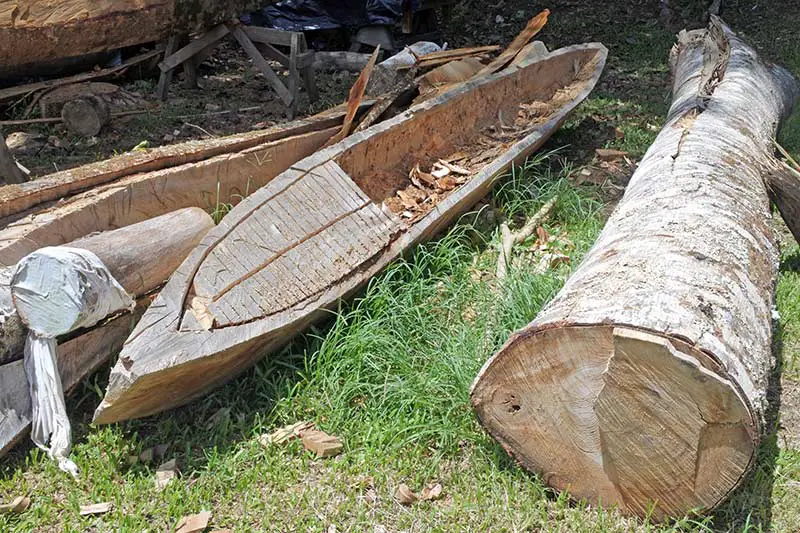
The word Kayak (ki ak), means “man-boat in Eskimo, and as such, the origin of the kayak can be traced back to Inuit tribes in Greenland, Arctic North America and Siberia. Traditionally made of a wooden frame with seal skin stretched over to create a completely covered top. This kept the hunters warm dry and, crucially, alive in the freezing climate.
What is the difference between a Canoe and a Kayak?
There are a few key features that distinguish a kayak from a canoe.
- First is the seating position. A kayaker sits inside the kayak with legs outstretched pointing forwards, while in a canoe the paddler is either kneeling or sat in a rowing position.
- Canoes are also usually open decked whilst kayaks are usually close decked, sometimes with an almost watertight spray deck. There are exceptions to this rule as sit-on kayaks, and most inflatable kayaks are open decked.
- The paddle on a canoe is a single paddle while the kayak paddle is a double paddle (a splashy bit on each end).
- Both kayaks and canoes can have multiple paddlers, but kayaks are very rarely more than a two-person while canoes often have space for three or more.
So, to summarise.
Kayak – the paddler sits inside a closed deck and propels the vessel with a double-ended paddle.
Canoe – the paddler is kneeling in an open-topped vessel using a single oar for propulsion.
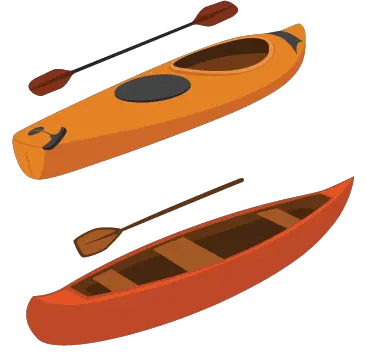
Types of Kayaks
Recreational Kayaks
Recreational kayaks are likely a persons first experience with the sport of kayaking. They have a larger cockpit opening (or are even sit on) to make it easier to get onboard. The length of the hull is shorter than a sea or touring kayak. This makes it easier to turn for a beginner, but impacts on its ability to stay on a straight course, which is known as “tracking”.
The profile of the hull is also much wider and flat bottomed. This creates a more stable platform when paddled on flat water in good conditions, but makes them less suited for choppy water and longer distances.
Often the hull of a recreational kayak will be a single open compartment. This can make them susceptible to sinking if they fill with water.
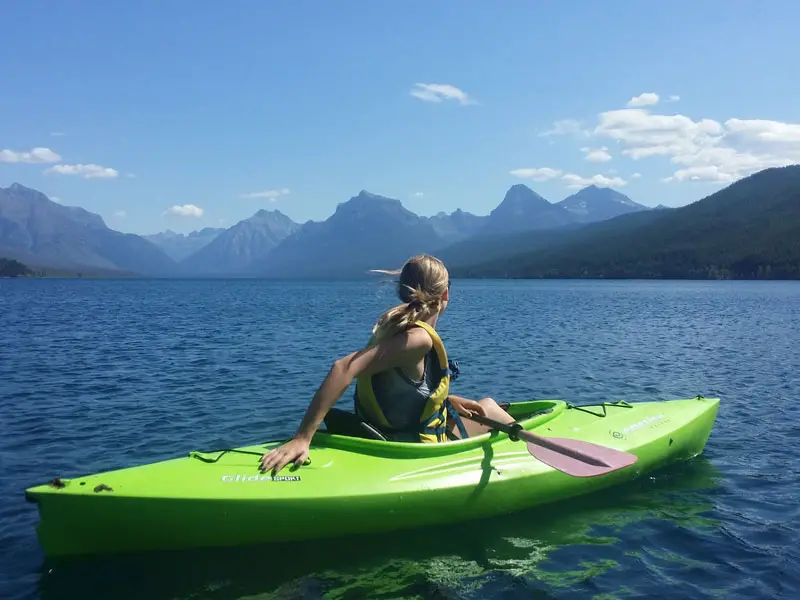
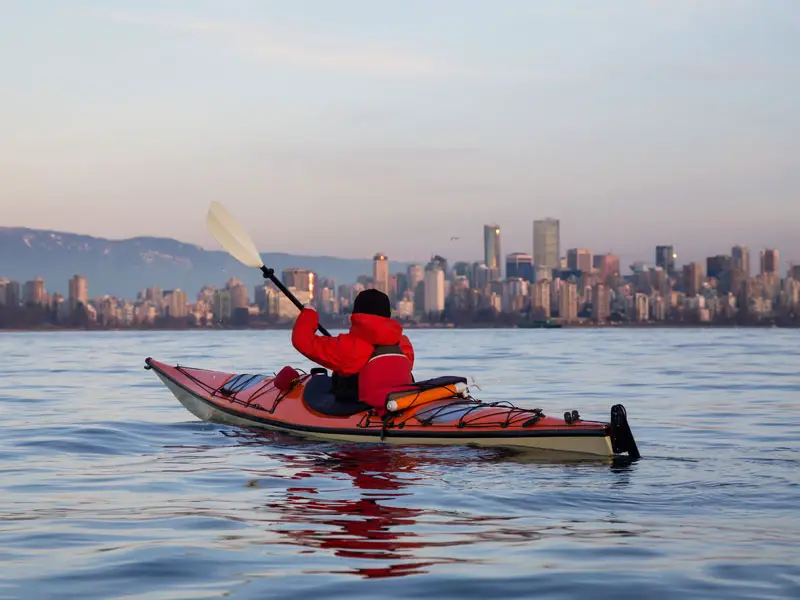
Sea and Touring Kayaks
Sea or touring kayaks are characterised by their longer, thinner V-shaped hull compared to a recreational kayak’s wider and flatter profile. As kayaks are displacement vessels, their top speed is determined by the length of their hull. This longer hull shape means that sea kayaks have a higher top speed and can cover much more water when compared to recreational ones, making them perfect for longer voyages.
The narrower V-shaped hull reduces drag, requiring less energy to paddle through the water. They may feel more “tippy” then a recreational kayak but actually have more secondary stability and are less likely to capsize completely.
Touring kayaks are often taken on trips or expeditions lasting many days or weeks. Most have large watertight storage compartments in the hulls and deck nets on top to secure camping gear and supplies. The watertight compartments also double as buoyancy chambers, keeping the kayak afloat even if it gets swamped – which can be helpful if you are out in the wilderness.
Whitewater Kayaks
Not advised for a complete beginner, whitewater kayaking is an intense, adrenaline-fueled sport with paddlers needing to quickly change direction to pass through slalom gates and to avoid hazards.
For this whitewater kayaks are shorter and have more rocker (the curve in the hull from bow to stern). To avoid getting swamped and ultimately sinking, the paddler uses a waterproof spraydeck to seal the cockpit.
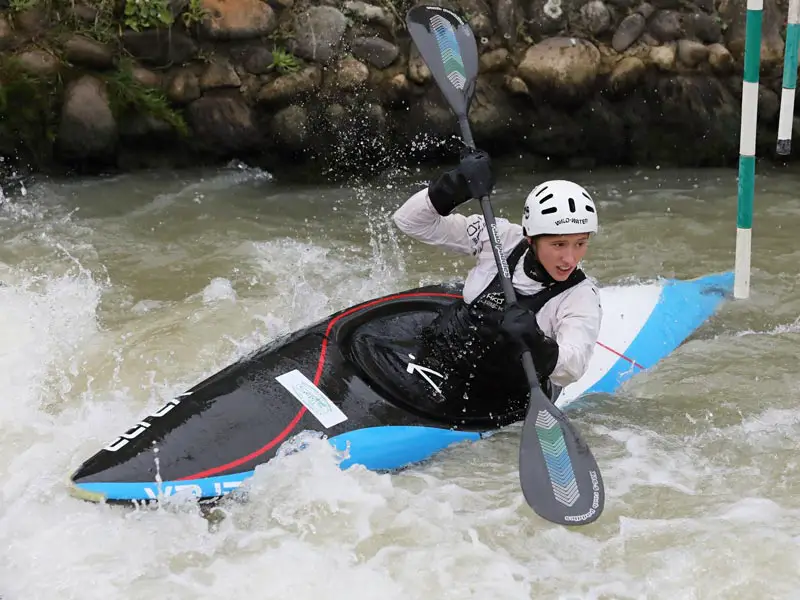
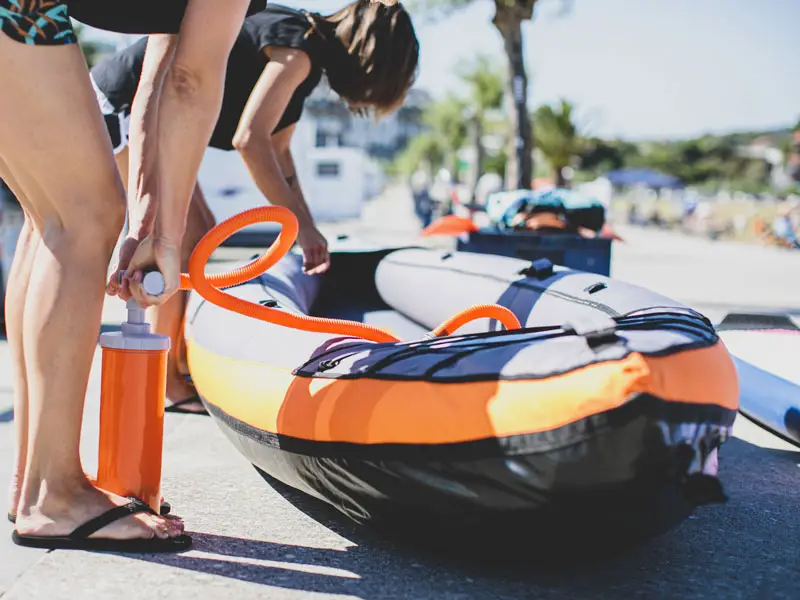
Inflatable Kayaks
Inflatable kayaks are exactly what they sound like – kayaks that you can inflate! However, these are not your average toy shop inflatable. Modern materials and construction methods have made some inflatable kayaks as durable as their hard-shelled equivalents. Some inflatable kayaks are now pretty capable craft.
Whilst there are some trade-offs, particularly in set up and pack away time. Inflatable kayaks are a great solution for those people that don’t have storage space for a hard kayak or a vehicle with a roof rack. Most pack away into a duffel bag or backpack size, easily fitting into the trunk of a small car, and can easily be carried to the water’s edge.
Inflatable kayaks are also ideal if you like to take kayaking vacations abroad and want to use your own gear rather than rent. They easily fit into most airlines checked bag weight and size limitations.
Needing some more inspiration? Have a look at our blog for more helpful articles.


